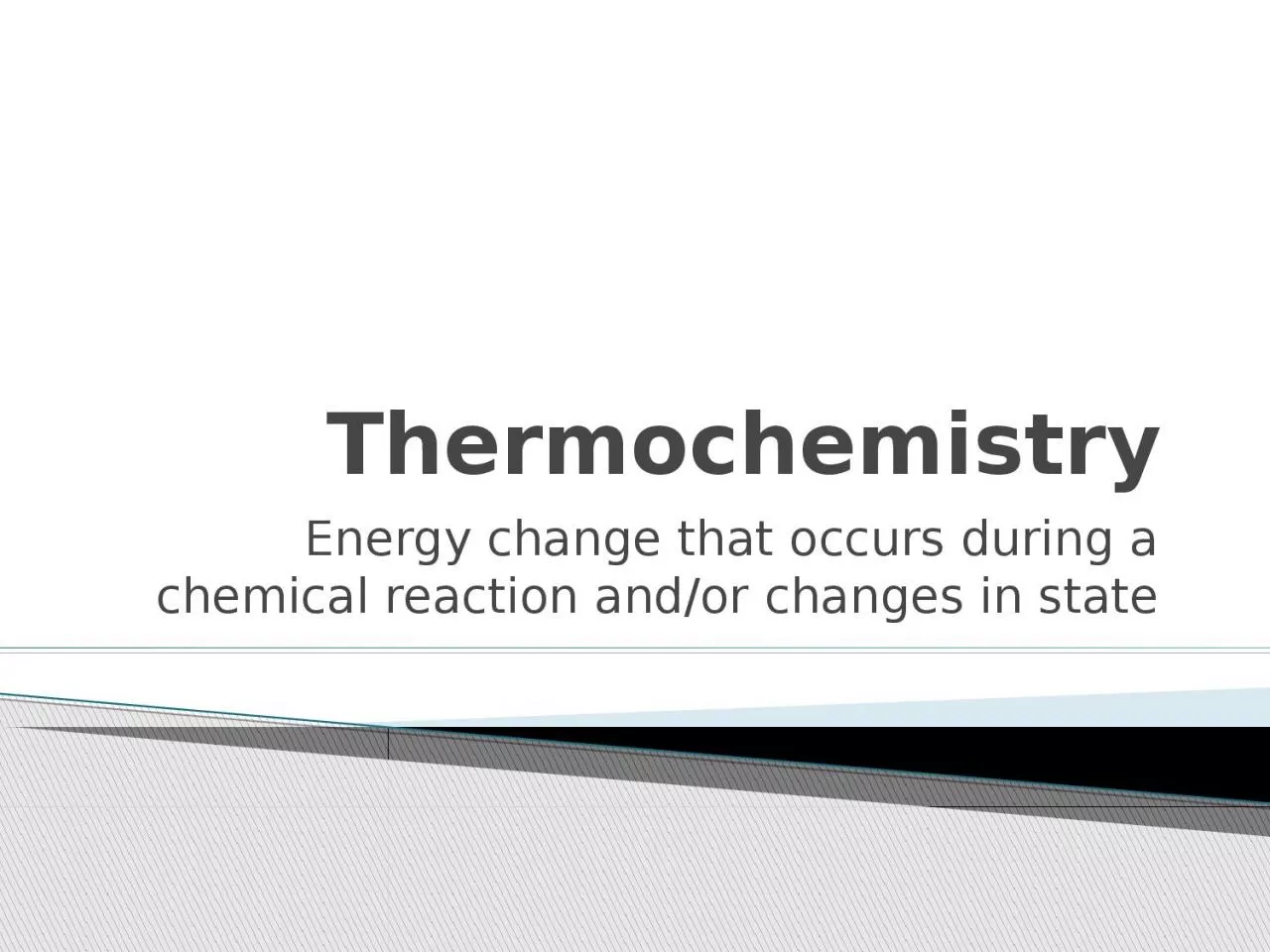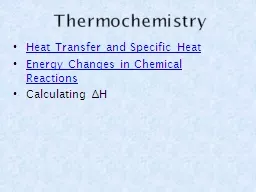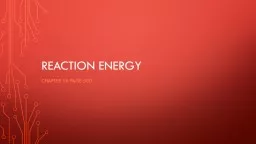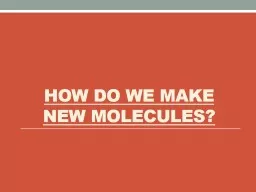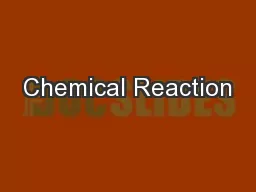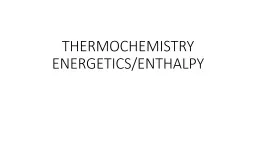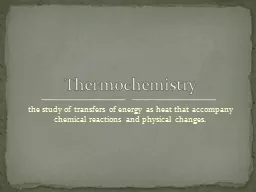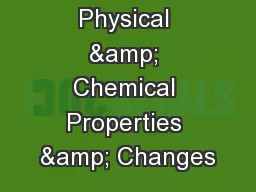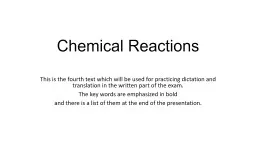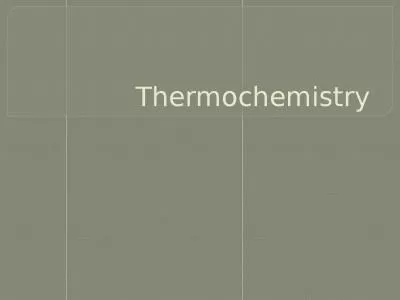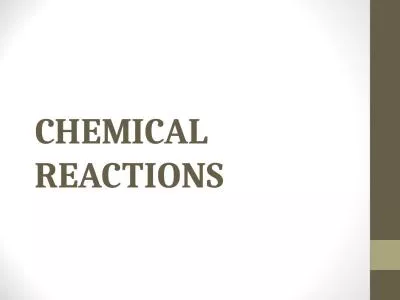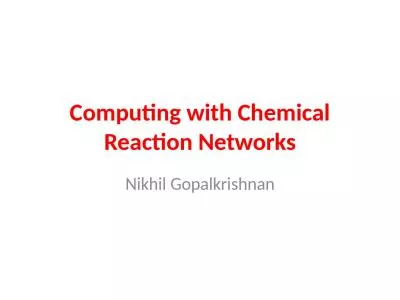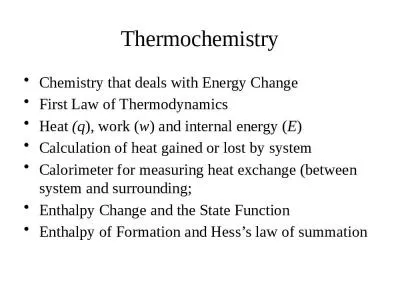PPT-Thermochemistry Energy change that occurs during a chemical reaction and/or changes in
Author : HappiestManAlive | Published Date : 2022-08-04
A form of energy Flows from warmer objects to cooler objects Represented by the variable q Measured by units calorie or joule 1 J 02390 cal 4184 J 1 cal 1000
Presentation Embed Code
Download Presentation
Download Presentation The PPT/PDF document "Thermochemistry Energy change that occur..." is the property of its rightful owner. Permission is granted to download and print the materials on this website for personal, non-commercial use only, and to display it on your personal computer provided you do not modify the materials and that you retain all copyright notices contained in the materials. By downloading content from our website, you accept the terms of this agreement.
Thermochemistry Energy change that occurs during a chemical reaction and/or changes in: Transcript
Download Rules Of Document
"Thermochemistry Energy change that occurs during a chemical reaction and/or changes in"The content belongs to its owner. You may download and print it for personal use, without modification, and keep all copyright notices. By downloading, you agree to these terms.
Related Documents

